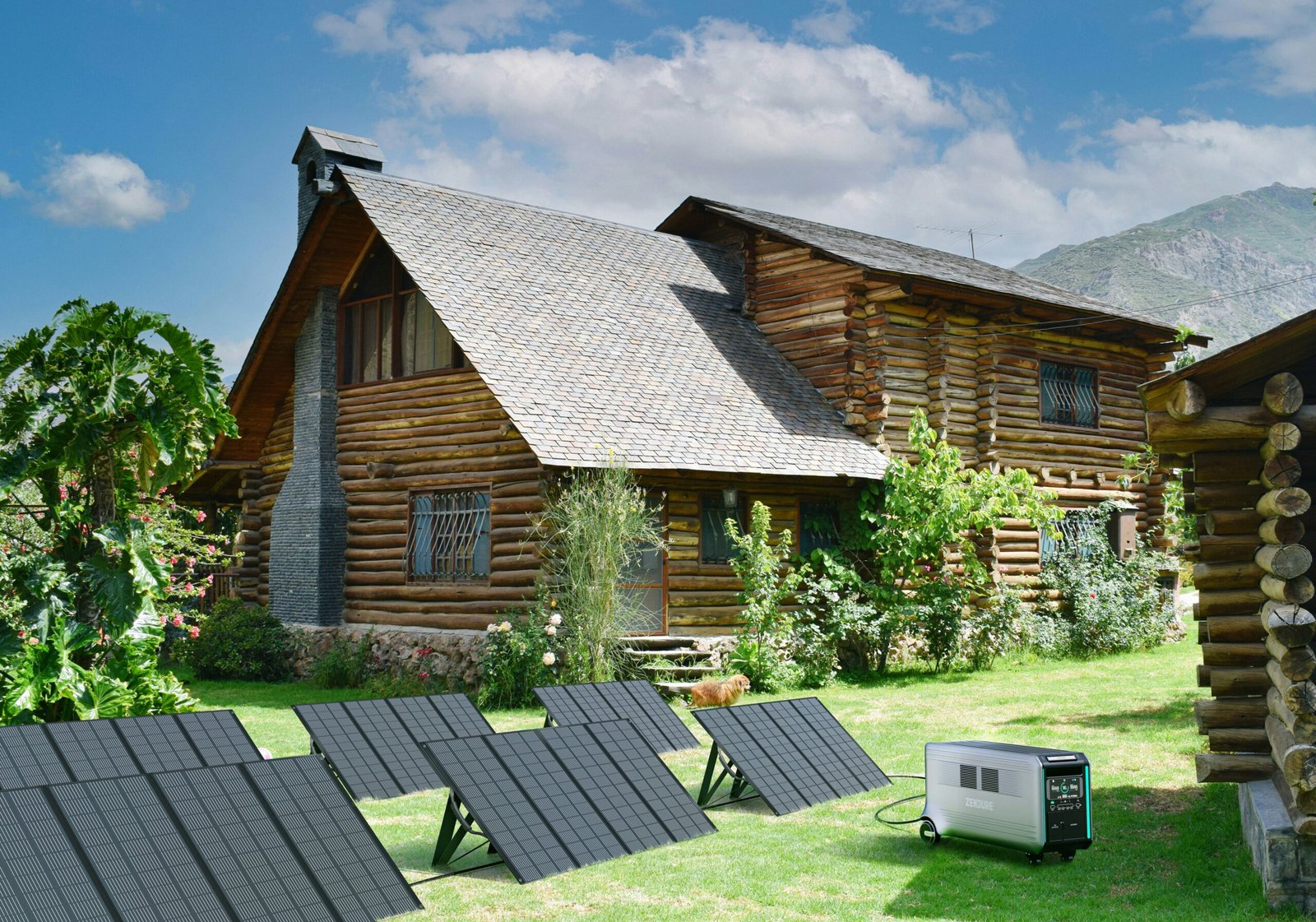Going off-grid sounds bold. It is. But it’s also completely doable when you understand the basics of solar power and choose the right setup for your lifestyle. Once your system is in place, you’re not just saving on electricity. You’re running your life on your own terms. No utility company. No surprise rate hikes. Just sun, batteries, and freedom.
Let’s walk through what you actually need to get started.
Step 1: Figure Out Your Energy Needs
Before buying gear, sit down with a piece of paper. Seriously. Make a list of every appliance or device you plan to use.
Examples:
- LED lights
- Mini fridge
- Water pump
- Laptop and phone chargers
- Coffee maker
Write down each item’s wattage and daily usage. Add it all up to estimate your daily energy needs.
A small off-grid cabin might use 5–8 kWh per day. A full-time home with regular living patterns might hit 15–30 kWh per day. Your lifestyle drives your system size.
If you know you’re going to run a blender every morning, count it. The system only works when it matches real life.
Step 2: Design Your Solar Array
Your panels only work well if they get sun. Consistent sun.
Pay attention to:
- Panels facing true south (Northern Hemisphere)
- Tilt angle close to your latitude
- Removing or trimming shade sources
A medium off-grid setup might use 20 to 30 solar panels. These can be roof-mounted or placed on a ground rack. Ground racks are easier to clean and adjust. Roofs save space. Choose based on your land and climate.
One hour spent planning your array location can save you years of frustration.
Step 3: Choose Your Battery Bank
The batteries store your power for nighttime and cloudy days. They’re the heart of the system.
Two common battery types:
| Type | Advantages | Drawbacks |
| Lithium (LiFePO4) | Long lifespan, efficient, lightweight | Higher cost upfront |
| Lead-Acid (AGM/Flooded) | Lower cost to start | Shorter lifespan, heavier, needs more space |
Most off-grid homes work well with 20–40 kWh of storage. For example, a 28 kWh lithium battery bank is a strong middle-ground for steady, reliable power.
Go too small on batteries and you’ll notice right away. It means lights dimming or choosing between the fridge and the microwave. Not ideal.
Step 4: Charge Controller and Inverter
These components regulate power flow and make it usable for your home.
Charge Controller
- Converts solar output into safe charging power for your batteries
- MPPT controllers are the efficient choice
Inverter
- Converts stored DC battery power into usable AC household power
- A 5,000 watt inverter with 10,000 watt surge capacity handles most small to medium homes
If your inverter is undersized, appliances may trip it. Better to size slightly above your needs.
Step 5: Wiring and Safety
This part isn’t glamorous, but it matters.
- Use the right wire gauge to prevent heat and power loss
- Add breakers and fuses where needed
- Protect wiring from weather, sharp edges, or curious animals
- Ground your system properly
If wiring makes you uneasy, hire an electrician for this part. Many DIY builders handle the panel mounting and battery assembly, then get a licensed electrician for the final safety check. Smart move.
A Simple Starter Option (If You’re Not Ready to Build From Scratch)
If you’re not ready to design a full system yet, or you just want backup power that works right out of the box, look at solar generator systems. They combine the inverter, charge controller, and battery storage into one unit, so you only have to connect the panels.
A reliable place to compare ready-made off-grid and emergency solar generator kits is My Patriot Supply. They carry bundled systems designed for cabins, RVs, and emergency home power. You can browse options here:
It’s a good way to start small and scale later if you want a full custom setup.
Final Takeaway
Going off-grid isn’t just buying panels. It’s thinking about how you live, what you power, and how much flexibility you want. But once the system is built, the feeling is something most people don’t forget. Your lights turn on because of the sun. Your meals cook because of sunlight stored in batteries. Your independence is literal, not a slogan.
It’s freedom in motion.
FAQs
How big should my system be?
Most off-grid homes use 5–15 kW of panels and 20–40 kWh of storage.
What’s the biggest downside of off-grid solar?
Weather variability. Batteries solve this, but they’re an investment.
What angle should the panels be set at?
Usually close to your latitude for steady year-round performance.
What’s included in a typical off-grid system?
Panels, charge controller, inverter, battery bank, mounting hardware, wiring, breakers, and grounding components.

